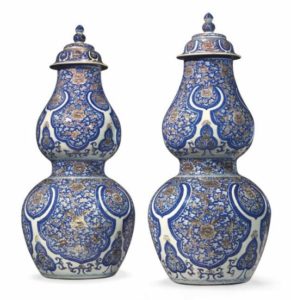Chinese Kangxi Antiques

Chinese Kangxi Antiques
Among the earliest pieces fired in the Kangxi period were porcelains painted in underglaze cobalt blue our copper red, followed by monochrome copper-red glazed items. Here a new version was developed, peculiar to the Kangxi reign, which was produced for only a very short period. What in the West is known as ‘peach bloom’ is one of the rare monochrome glazes on porcelain that deliberately uses the natural tendency of the material to produce uneven results for decorative effect (cat. no. 5). ‘Peach bloom’ is now considered to be a short-lived early development of the Kangxi reign, and the attractive variegated, mottled tones of red, occasionally reverting to green, probably resulted from first difficulties to control the fugitive copper pigment. That some such results were accepted and recognized as being particularly attractive is remarkable in this otherwise perfection-driven period. In this respect, it harks back to Song dynasty (960-1279) aesthetics, where the interest of many glazes lay in their variation, comparable to that of natural stones. From the Ming dynasty onwards, when the imperial kilns came under strict court control, variations were no longer allowed.
Another glaze characteristic of the Kangxi reign is in the West known as ‘powder blue’ (cat. no. 13). It is a cobalt-blue glaze which, having been blown through a gauze-covered tube, is subtle and delicate – quite unlike predecessors that were in use since the Yuan dynasty (1279-1368), which cover the white porcelain with a thick, opaque, intense blue coating. Unlike ‘peach bloom’, which is only known from pieces of Kangxi mark and period, ‘powder-blue glazed vessels are generally unmarked, often over-decorated with gold, or decorated with polychrome enamels in reserved panels.















































































































































































































































































































































































































